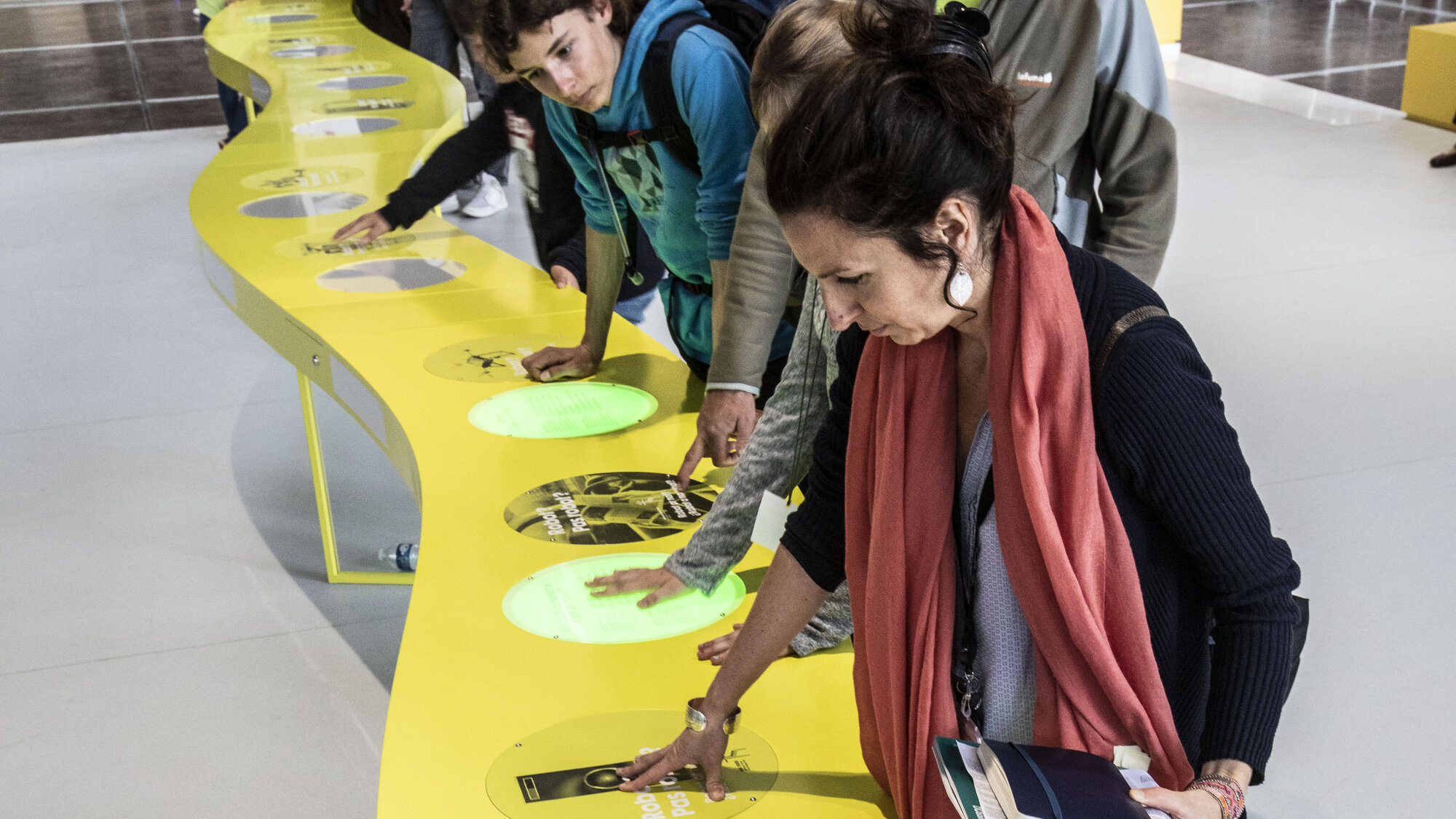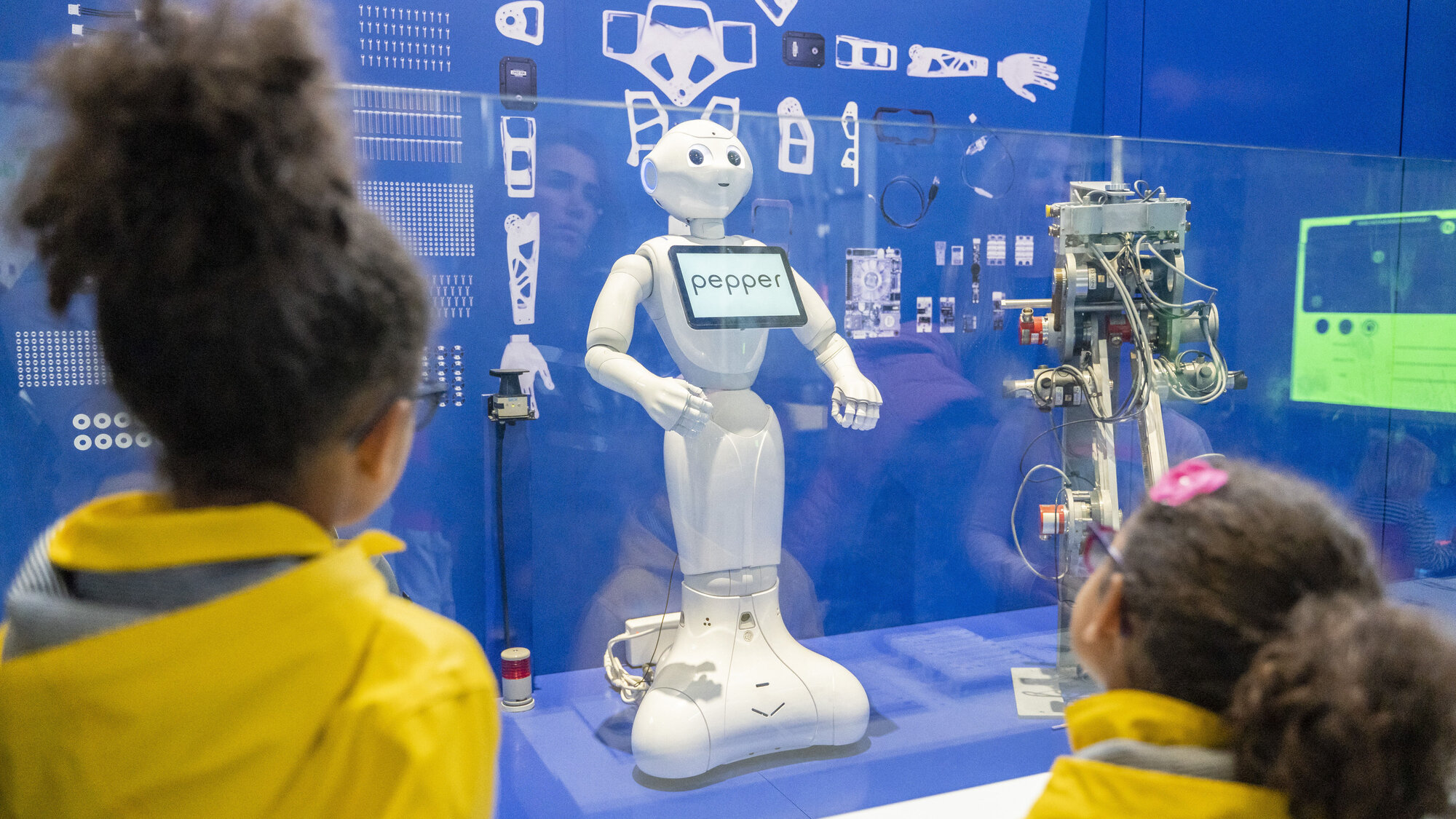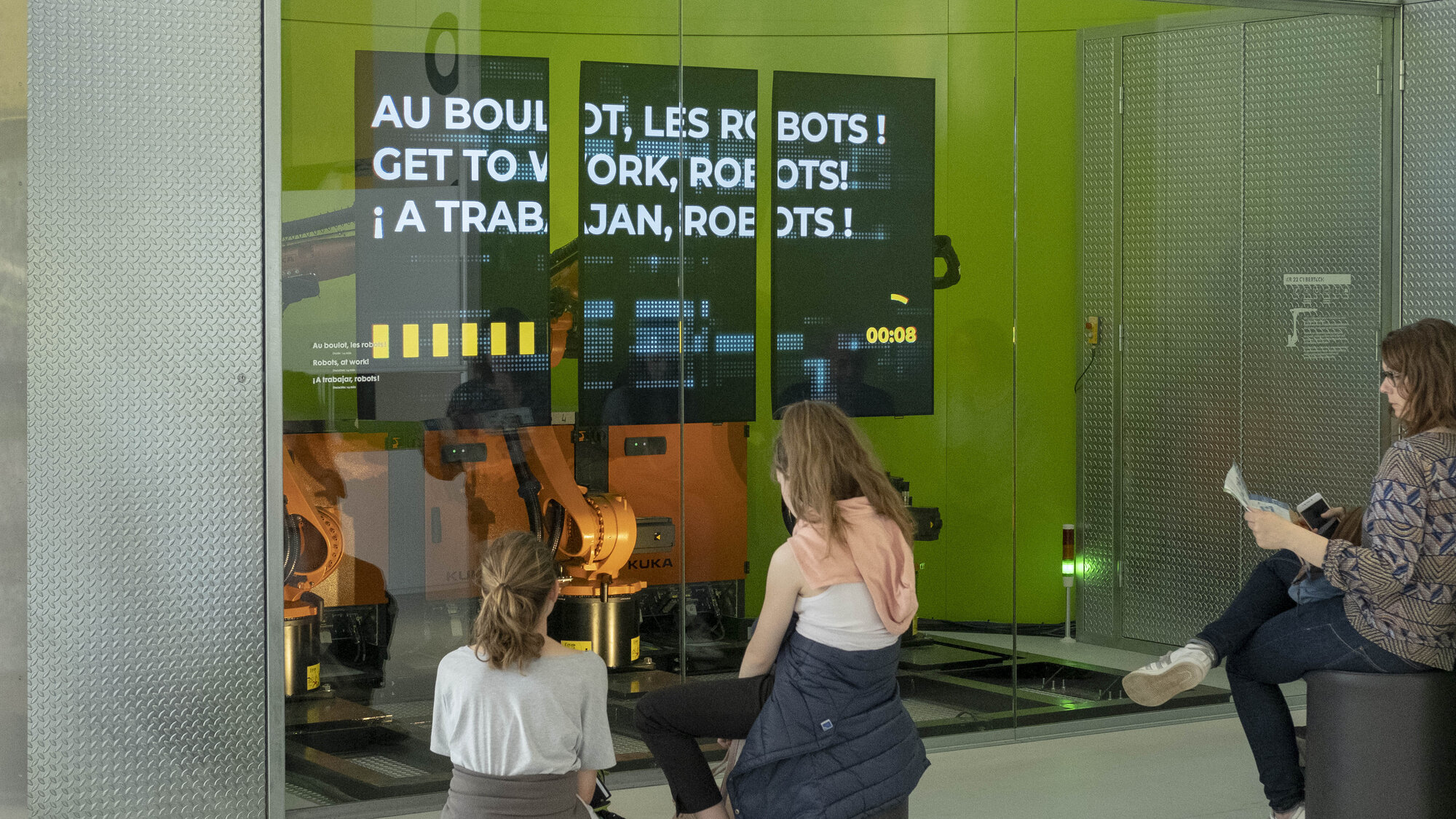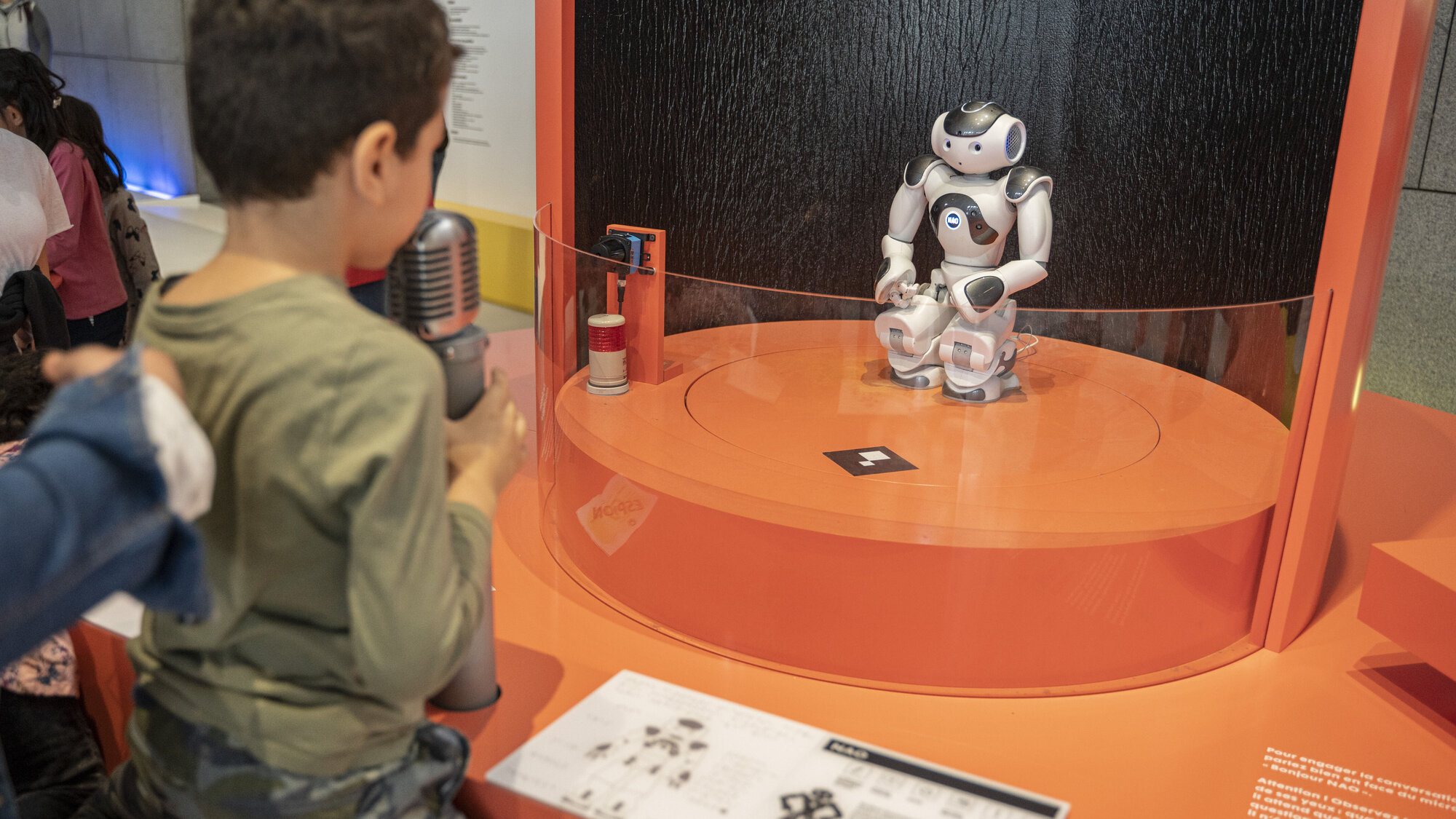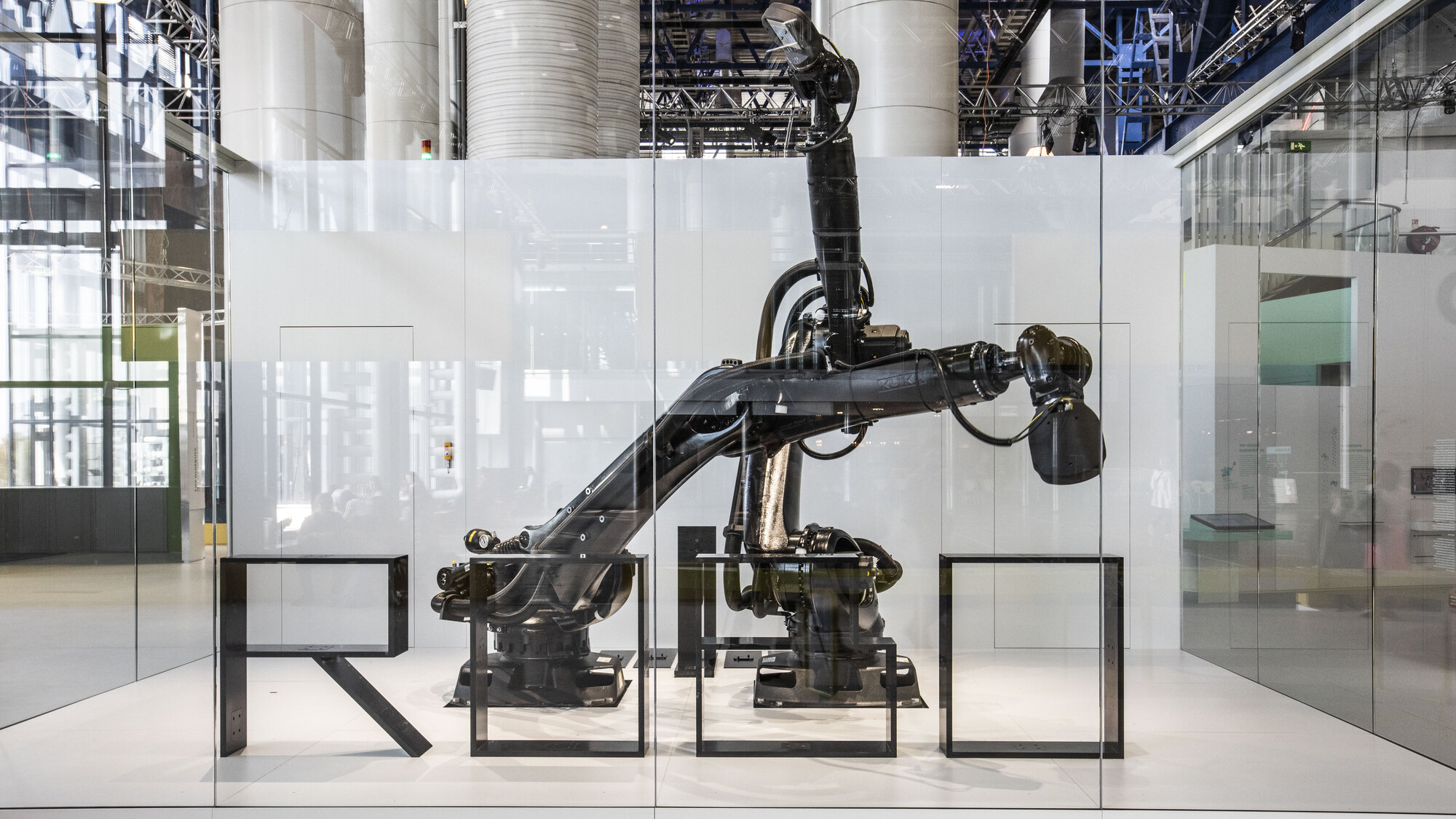The exhibition
![[Translate to Anglais:] Robots](/fileadmin/_processed_/9/1/csm_RobotsUne-1330p_694489f30a.jpg)
The permanent Robots exhibition, divided into six main sections, allows you to grasp the challenges of contemporary robotics, interact with real robots and tackle the major issues linked to their arrival in our daily lives.
Practical informations
-
€15 | €12 | Our prices
-
Audience aged 11 years and up
-
Trilingual exhibition (French, English, Spanish)
-
The Cité is open from Tuesday to Saturday 10.00 am - 6.00 pm and 10.00 am - 7.00 pm on Sunday.
Accessibility
- Accessible to visually impaired visitors
- Accessible to visitors with reduced mobility
- Accessible to deaf and hard of hearing visitors
Prepare for your visit
Small strollers are allowed in the museum: ramps and elevators allow access to all exhibition areas.
You are a teacher?
Around the exhibition
The book
What is a robot? How does it work? How is research progressing, what are the challenges and the economic and social questions posed by robotics in the twenty-first century?



